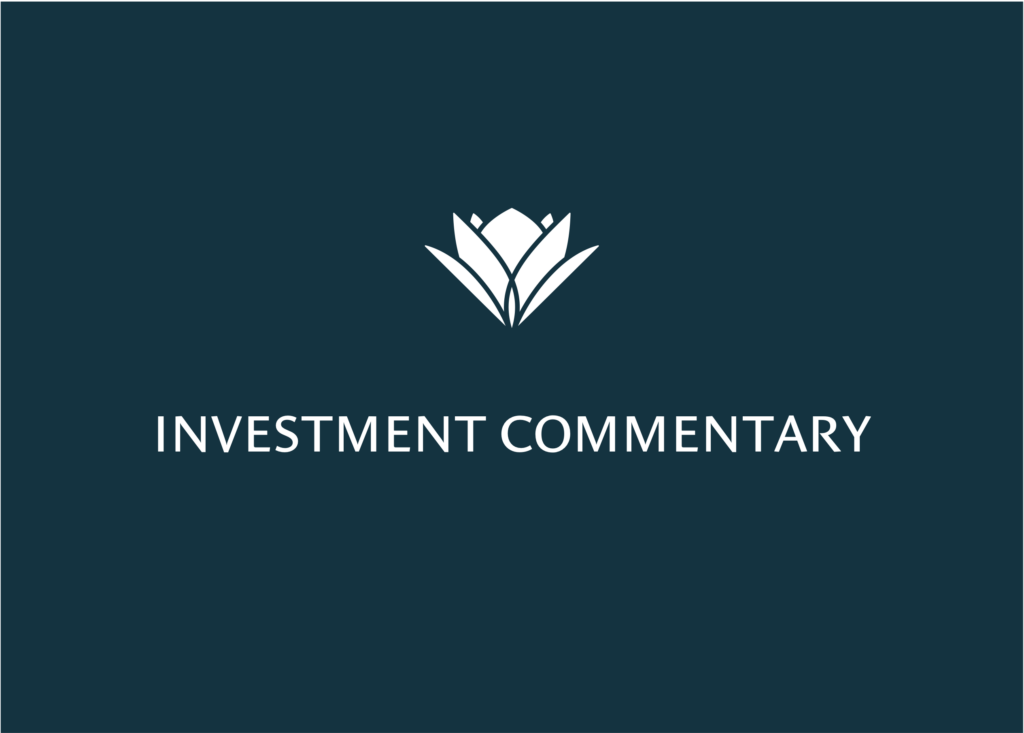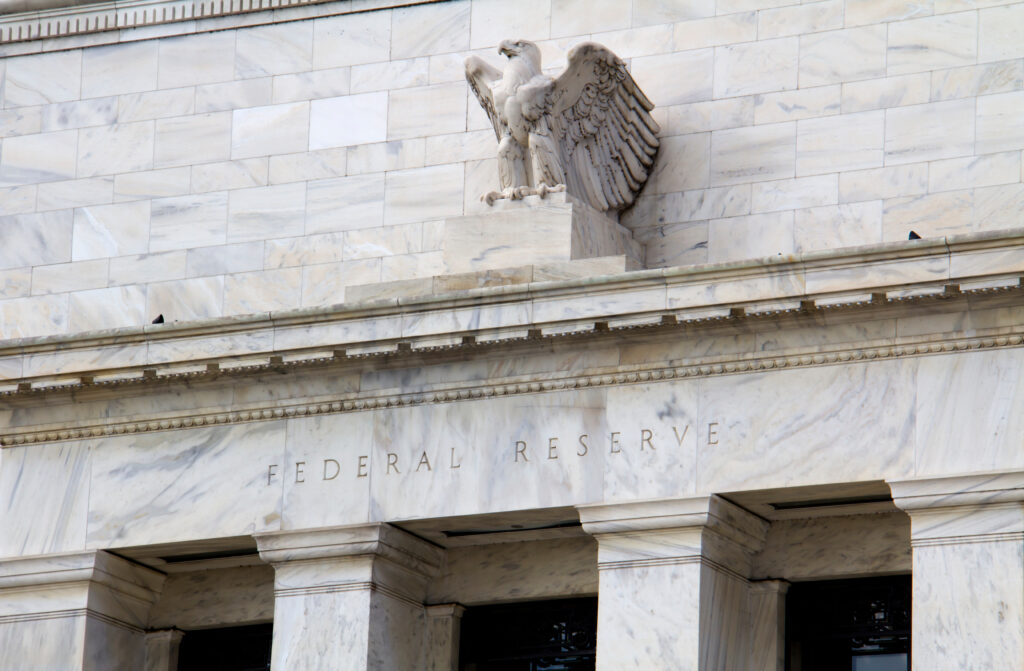Since the Federal Reserve started raising interest rates a year ago, financial markets have reflected a favorite Warren Buffett metaphor: “When the tide goes out, you find out who is swimming naked.”
The first exposed were crypto, new internet stocks, and other beneficiaries of market exuberance. But it was complacent long-term bond investors who were the real sight. “Conservative” long-term bonds suffered historic losses in 2022—down more than the stock market.
The big story that will shape 2023 or 2024 is unlikely found in anyone’s newsletter or investment strategy today. I admit when I wrote this January that I didn’t expect anything soon, much less a new banking crisis. If I had, would I have predicted stocks and bonds be up in 2023 through April? Not a chance. Investing in forecasts doesn’t work.
Uncertainty is ever-present, but this seems like a particularly precarious and confusing time. An analyst recently observed, “The bond market is pricing in recession; the stock market is pricing in [artificial intelligence].”
There is a strong consensus that (1) a recession will start very soon, and (2) it will be an ideal “soft-landing.” I can’t recall a time the crowd successfully predicted a soft-landing.
This suggests preparing for no recession and deep recession to minimize the chances of being precisely wrong with the crowd while increasing the chances of being approximately right later and over time. To this end, we have taken a “barbell” approach in our multi-asset portfolios, and to a lesser extent, our all-equity portfolios.
In our barbell portfolio are higher-conviction stocks like Costco, Danaher, and Berkshire Hathaway—companies we think have the rare combination of great business models, plausible growth, and superb management. We are buying more here. Conversely, we have minimized expensive areas of the stock market exhibiting investor complacency or over-optimism, including cyclicals, technology, and consumer sectors.
The bulk of assets are in shorter term Treasurys, inflation-protected Treasurys, and a smaller amount in medium-term and longer-term investment grade bonds. With short-term Treasury bills now yielding over 5%, investors now enjoy the highest “risk-free yield” since 2006. The yield on these cash-like holdings means we can be choosier with stocks and bonds. It pays to wait, especially given the near-term future of all investment types depends on the Fed’s Federal Open Market Committee (FOMC). Its next interest rate decision will be announced May 3.
| FOMC Meeting Date | Rate Change Decision | Federal Funds Rate Policy |
| March 2, 2023 | ↑ 0.25% | 4.75% to 5.00% |
| February 1, 2023 | ↑ 0.25% | 4.50% to 4.75% |
| December 14, 2022 | ↑ 0.50% | 4.25% to 4.50% |
| November 2, 2022 | ↑ 0.75% | 3.75% to 4.00% |
| September 21, 2022 | ↑ 0.75% | 3.00% to 3.25% |
| July 27, 2022 | ↑ 0.75% | 2.25% to 2,50% |
| June 16, 2022 | ↑ 0.75% | 1.50% to 1.75% |
| May 2, 2022 | ↑ 0.50% | 0.75% to 1.00% |
| March 17, 2022 | ↑ 0.25% | 0.25% to 0.50% |
The Fed is having a harder time delivering Goldilocks conditions—low inflation with high economic growth and wealth generation. It may find the tradeoff between inflation management and stimulus is a longer-term one. What they choose could mark an inflection point and frame investment strategy for years to come.
No banks
The mountain of new banking regulations and controls in place since The Great Financial Crisis were supposed to create lasting safety and soundness. Then a handful of banks failed recently. The initial blaze has been contained, but some banks still find themselves vulnerable.
The problem wasn’t bad loans or too much leverage but another kind of folly, something a bit more technical: duration matching between their assets (loans and securities) and liabilities (customers’ deposits).
A short version of what happened: banks, especially those depending on fewer, large depositors, forgot or underestimated certain important truths:
- Deposits can leave anytime, including and especially from very large depositors.
- Any number of large depositors can leave at the same time, especially if they are alike (e.g. venture capital and high tech, in the case of Silicon Valley Bank).
- Long-term interest rates can go up.
Some large banks and many smaller regional banks invested too much of their assets in longer term bonds classified as “Held-to-Maturity” (“HTM”). These are generally high-quality securities that banks don’t have to constantly “mark-to-market” or book profits and losses as prices fluctuate. This accounting convention, combined with yield-seeking, moved banks to load up on HTM, especially over the past few years with short-term yields around zero.
Last year, interest rates (finally) rose, and the prices of longer-term bonds fell. By itself this wouldn’t be a problem: losses would not have to be booked since those bonds would be held to maturity, and losses would reverse. However, too much in HTM combined with too little in cash and liquid assets meant some banks were vulnerable to even a few depositors pulling their money out, forcing banks to sell their HTM securities—at a loss.
The flip side to HTM’s mark-to-market immunity: just one sale of the HTM portfolio triggers all HTM bonds to be marked-to-market (with some exceptions), and losses in all underwater bonds realized. Most HTM bonds are currently underwater. Booking the full HTM loss would wipe out the bank’s equity, causing instant insolvency.
In Silicon Valley Bank’s case, some 97% of deposits were uninsured, meaning almost all deposits were above the FDIC’s $250,000 coverage limit. Most of the bank’s deposits were from a relatively small number of big accounts with balances in the hundreds of millions and billions of dollars. Many were from the technology ecosystem, including venture capital and start-ups. The pop in Technology and crypto valuations (and some big fraud stories) lead to depositors pulling funds. Game over.
The Fed and Treasury executed a full bailout, which has calmed fears for now. The future of smaller banks that have too much in HTM and with large uninsured deposits, is still in question. Janet Yellen, the Treasury Secretary, said only “banks with systemic risk” potential will be bailed out, as Silicon Valley Bank was deemed to have. If she means it, depositors using smaller banks face a greater risk than those at large banks.
In the meantime, investing in banks seems like a risky proposition, even with stock prices cut in half or more. With each crisis, banks in the U.S. become more like those abroad—fewer, nationalized institutions with poor profitability and returns for shareholders.
Our investments in banks have always been quite small when we’ve had them at all. Banks and other lending businesses haven’t struck me as great businesses the way they do value investors in general. (To be fair, most of them would challenge my value thesis on Costco.) I think we are better off in long run thinking of banks as “uninvestable” like airlines, autos, and most retailers.
Please don’t hesitate to contact me if you have any questions.
Neil Rose, CFA
The content provided in this document is for informational purposes and does not constitute a solicitation, recommendation, endorsement, or offer to purchase or sell securities. Nothing should be considered personal financial, investment, legal, tax, or any other advice. Content is information general in nature and is not an attempt to address particular financial circumstance of any client or prospect. Clients receive advice directly and are encouraged to contact their Adviser for counsel and to answer any questions. Any information or commentary represents the views of the Adviser at the time of each report and is subject to change without notice. There is no assurance that any securities discussed herein will remain in an account at the time you receive this report or that securities sold have not been repurchased. Any securities discussed may or may not be included in all client accounts due to individual needs or circumstances, account size, or other factors. It should not be assumed that any of the securities transactions or holdings discussed was or will prove to be profitable, or that the investment recommendations or decisions we make in the future will be profitable or will equal the investment performance of the securities discussed herein.
Photo is AI generated!



